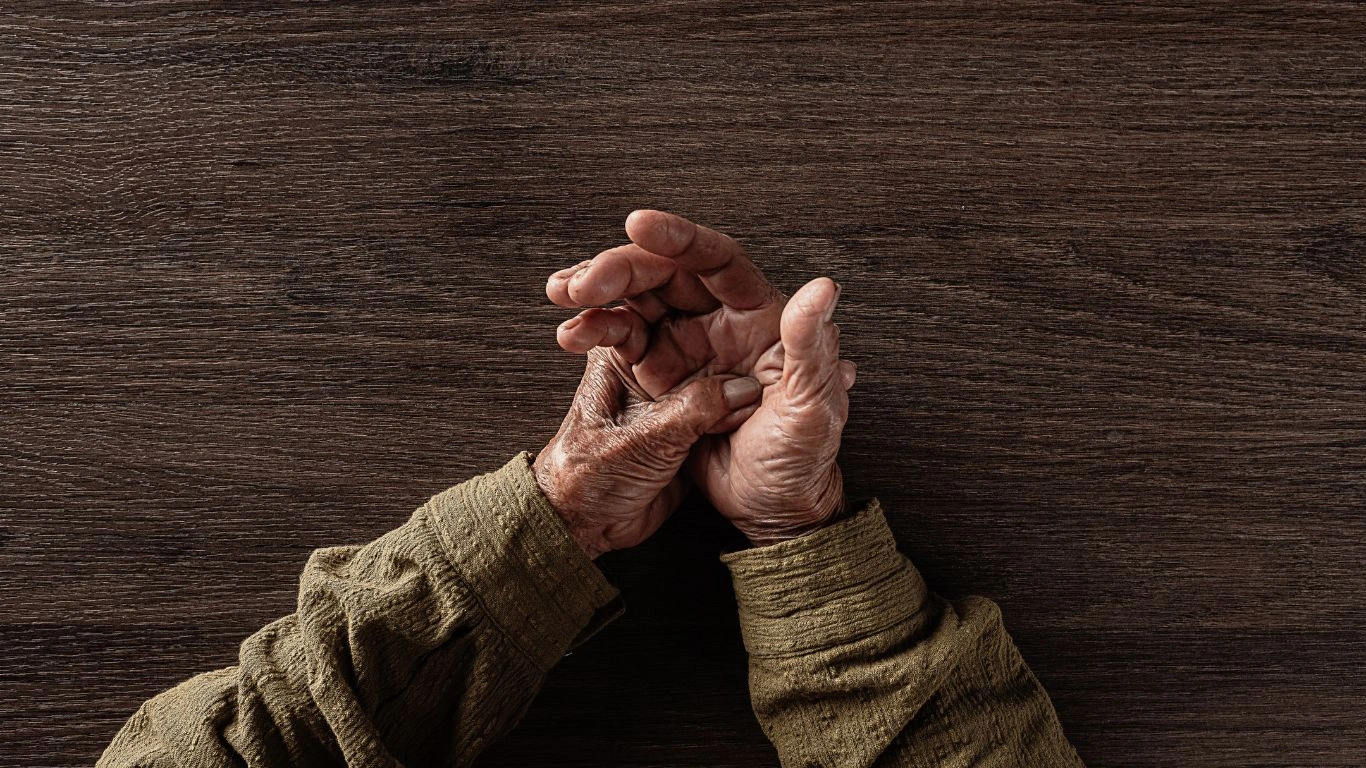Revealing What RA Looks Like on Xray: Essential Insights for Patients
When folks ask me what rheumatoid arthritis (RA) really looks like inside the joints, especially on an X-ray, I usually start by saying—”It’s not always obvious, but when you know what you’re looking for, it practically jumps out at you.” What RA looks like on Xray isn’t just about bones—it’s about a deeper story of inflammation, damage, and changes that slowly shape a person’s mobility and daily life. I’ve seen this countless times in clinic, and it still amazes me how the body speaks through these images, if we’re willing to listen.
What You’re Seeing (And Not Seeing) on an X-Ray

Bone Erosions and Joint Space Narrowing
Let’s get into the nitty-gritty. One of the first things I learned to spot—and teach patients about—are bone erosions. These are tiny bites taken out of the joint edges, like little chunks missing from the bone. RA doesn’t just inflame; it eats away. The immune system gets confused, starts attacking the joint lining (synovium), and over time this inflammation causes cartilage and bone loss.
Joint space narrowing is another big clue. The healthy cushion between your joints? It starts to wear down. On the X-ray, this space looks thinner and sometimes almost completely gone, depending on the stage. In my experience, patients are often surprised to see how “empty” those joints can look, especially in the hands and wrists, which are early targets in RA.
Hands and Wrists: Ground Zero
If I had a dollar for every RA X-ray of the hands I’ve reviewed, I’d have a retirement fund by now. The hands and wrists are usually the first to show those classic signs. You’ll often see symmetric changes—meaning both sides look similarly affected. That’s a hallmark of RA. It’s not just one thumb joint acting up; it’s both.
- Soft tissue swelling—looks like puffiness around the joints
- Periarticular osteopenia—bones near joints lose density
- Marginal erosions—tiny notches at joint edges, not seen in OA
One patient I’ll never forget was a piano teacher. Her fingers had become stiff and painful, and when we reviewed her X-rays together, she let out a soft “wow.” It was powerful for her to finally see what she was feeling—visible proof that her pain wasn’t “just in her head.”
Why RA Changes Look Different From Other Arthritis Types

It’s Not Just Wear and Tear
This is where things get interesting—and where I find myself doing the most myth-busting. People often confuse RA with osteoarthritis (OA), but they show up very differently on X-ray. OA tends to cause bone spurs and joint space narrowing without erosion. It’s more about mechanical wear and tear.
RA, on the other hand, is an inflammatory beast. It leads to destructive, erosive changes early on. It’s aggressive, and if untreated, those changes show up shockingly fast. In early RA, you might see subtle swelling and demineralization. By the time you’re a year in without treatment? It can look like a completely different joint altogether.
- RA: symmetric joint involvement, marginal erosions, osteopenia
- OA: asymmetry, bony overgrowths, sclerosis
It’s honestly one of the reasons I push so hard for early diagnosis and imaging. X-rays, while not always perfect in early RA, can show patterns that raise red flags, especially in the hands, wrists, and feet. I’ve caught many early cases just by listening to a patient’s story and putting the pieces together with those first, subtle film findings.
When X-Rays Aren’t Enough

The Role of MRI and Ultrasound
Here’s a bit of real talk—sometimes X-rays don’t tell the whole story, especially in early RA. That’s where tools like MRI and ultrasound come in. MRI can pick up synovitis and bone marrow edema before you ever see damage on a plain film. Ultrasound is great for seeing live inflammation—like watching the battle unfold in real time.
But I’ll always have a soft spot for the humble X-ray. It’s quick, it’s accessible, and it often gives us our first real peek inside the body’s battle zone. If you know what to look for, it can speak volumes. And trust me, as a rheumatology NP, I’ve learned to “read between the bones.”
How Early Detection on X-Ray Can Change Everything

Catching RA Before It’s Too Late
One thing I’ve learned in my years of practice is this—early detection can be a game-changer. I’ve had patients walk in thinking their sore hands were just “normal aging,” only for their X-rays to reveal something much more serious. Seeing what RA looks like on Xray early on—those barely-there erosions, that subtle joint space narrowing—gives us a huge head start in treatment.
And trust me, time matters. The earlier we start disease-modifying treatments, the better the outcomes. I’ve seen patients who caught it early stay active, pain-free, and even avoid joint replacements. On the flip side, I’ve also cared for folks who waited too long, brushing off symptoms, and by the time they got to imaging… the damage was done.
Real Talk: X-Rays Don’t Lie
I remember one patient who had been dismissed for years—told she was just “overreacting” or that her symptoms were “in her head.” She came to us after struggling with daily tasks like buttoning her shirt or brushing her hair. When we finally got her X-rays back, I’ll never forget her face. The images showed severe erosive changes, clear joint destruction. It was validating and heartbreaking all at once.
That moment stuck with me because it reminded me how critical it is to believe patients, especially when symptoms are subtle. X-rays don’t always catch early inflammation, but when they do show signs—it’s confirmation. It’s like catching a whisper before it becomes a scream.
What the Progression of RA Looks Like on Film

From Subtle to Severe: The Stages of RA on X-Ray
Over time, the story RA tells on X-ray changes dramatically. In the early stages, you might only see soft tissue swelling and periarticular osteopenia—fancy talk for puffiness and bone thinning around the joints. But give it a year or two without treatment, and you’ll start seeing:
- Marginal erosions deepening
- Joint space narrowing becoming more pronounced
- Eventually, joint subluxation or dislocation
I like to think of it like a photo album. Early images show hints of trouble, maybe a little wear. Mid-stage films show the battle heating up—clear signs of bone loss and joint damage. And late-stage RA? You’ll see deformities, fused joints, and structural collapse. It’s dramatic, and it’s avoidable with proper care.
Hands, Feet, and Beyond
Hands get the most attention, but feet are a big player too. I always remind my patients that foot pain isn’t just about plantar fasciitis or bunions. RA often starts in the small joints of the feet—metatarsophalangeal (MTP) joints. On X-ray, I’ve seen classic erosions there long before the hands ever started acting up.
Eventually, RA can involve shoulders, knees, hips—even the cervical spine. I’ve had patients with neck stiffness get cervical spine X-rays and discover atlantoaxial subluxation. It’s a reminder that RA isn’t just a hand disease—it’s systemic and sneaky.
Why Clinical Experience Matters When Reading RA Films

It’s Not Just About the Picture
One of the things I pride myself on is not just reading X-rays—but reading them in context. Anyone can glance at a film and say “hmm, looks fine.” But when you’ve sat across from someone whose knuckles ache every morning, whose fatigue is draining their joy, you look at that image differently.
Years of clinical experience have taught me how to match what I see on the screen with what patients are feeling. That’s part of what gives this work meaning. I’ve developed a radar for subtle clues—a joint that looks “off,” a pattern that doesn’t match wear-and-tear OA. When I combine the imaging with a deep patient history and hands-on exam, it paints a full picture.
Patient Education Through Imaging
One of my favorite parts of clinic is pulling up an X-ray with a patient and walking them through it. We zoom in, point out changes, and talk through what it means. I don’t use a bunch of medical jargon—I break it down, human to human. I’ve had people leave those appointments feeling empowered because now they understand what’s going on inside their body. That understanding? It fuels adherence and trust in the treatment plan.
Because when you can actually see what RA looks like on Xray, the invisible illness becomes visible—and that changes everything.
Treatment Impact Reflected on X-Rays: What I’ve Seen in Practice

How Modern Treatments Can Change the X-Ray Story
One of the most rewarding parts of being a rheumatology nurse practitioner is witnessing how treatment can literally change the story told by X-rays. Over the years, I’ve seen patients come in with X-rays that show worrying erosions and joint space narrowing, and after consistent treatment, follow-up films reveal stabilization—or even improvement—in the joint condition.
This is no small thing. In the past, rheumatoid arthritis was often considered a relentlessly progressive disease, with X-rays showing steadily worsening damage. But today, with the availability of DMARDs (disease-modifying antirheumatic drugs) and biologics, we have the tools to halt, slow, or even reverse some of the damage seen on X-rays.
From my personal experience, early and aggressive treatment can make a huge difference. I’ve worked with patients who, just months after starting therapy, had fewer tender joints and less swelling clinically—and this improvement was mirrored in their imaging. It’s incredibly validating for patients to see their X-rays improve or at least stop worsening. It reinforces their motivation to stick with sometimes challenging medication regimens.
The Importance of Regular Imaging in Managing RA
Because RA can be sneaky and unpredictable, I always emphasize the importance of regular follow-up X-rays. These images aren’t just about documenting damage; they’re a critical tool to guide treatment decisions. When I notice new erosions or worsening joint space narrowing, it signals to me that we may need to tweak medications or add another layer of therapy.
On the other hand, stable X-rays over time mean the current treatment plan is working. It’s a balance of clinical judgment and imaging interpretation—both are essential. Patients appreciate this transparent approach because it helps them feel involved in their care, not just passive recipients of prescriptions.
Common Questions I Get About RA and X-Rays

“Can RA Be Missed on X-Ray?”
Absolutely, yes. Early RA can be tricky because the inflammation starts in the soft tissues and synovium, which don’t show up well on plain X-rays. It’s like trying to spot smoke before the fire is visible. That’s why sometimes we need other imaging methods, like ultrasound or MRI, especially if symptoms are classic but X-rays look normal.
“Does Everyone With RA Show Changes on X-Ray?”
Not right away. Some people have symptoms and positive blood tests long before their X-rays show changes. This latency period is why a diagnosis often relies on a combination of clinical findings, blood work (like rheumatoid factor and anti-CCP antibodies), and imaging. Over time, though, untreated RA usually leads to visible changes.
“How Often Should I Get X-Rays?”
That varies, but typically every 6-12 months is a good rule of thumb in active disease. If someone is stable with no symptoms, it might be less frequent. But regular imaging helps catch silent progression before it impacts function.
Final Thoughts on Understanding What RA Looks Like on X-Ray
From my perspective as a rheumatology nurse practitioner, X-rays are more than just pictures—they’re windows into the joint’s health and the body’s ongoing battle. Knowing what RA looks like on Xray empowers both clinicians and patients. It helps us see beyond symptoms and feel the urgency of early treatment, the progress of ongoing therapy, and the impact of living with a chronic condition.
RA is complex, but with careful imaging and clinical care, it’s a condition we can manage effectively. I hope sharing these insights and real-world experiences sheds light on the vital role X-rays play in that journey.
References
Disclaimer
This article is intended for informational purposes only and does not replace professional medical advice, diagnosis, or treatment. Always consult with your healthcare provider regarding any questions you may have about rheumatoid arthritis or your health condition.

Tarra Nugroho is a dedicated Nurse Practitioner with a strong foundation in family and preventive care. She brings both compassion and clinical expertise to her practice, focusing on patient-centered care and health education. As a contributor to Healthusias.com, Tarra translates medical knowledge into clear, empowering articles on topics like women’s health, chronic disease management, and lifestyle medicine. Her mission is simple: help people feel seen, heard, and informed—both in the clinic and through the content she creates. When she’s not caring for patients, Tarra enjoys weekend hikes, plant-based cooking, and curling up with a good health podcast.






